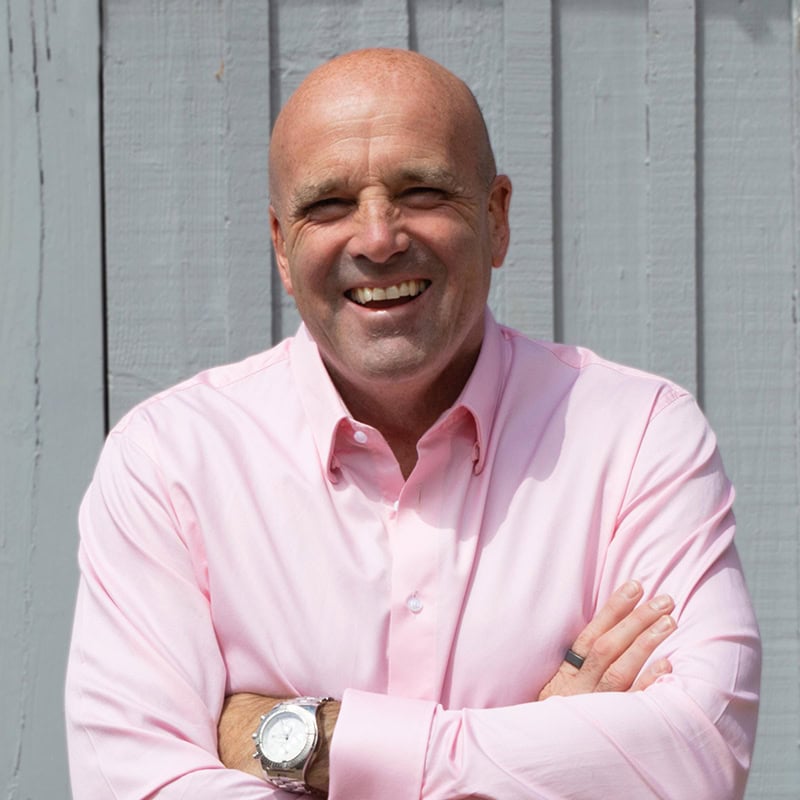Quick Summary
Embrace the Stockdale Paradox: confront harsh realities while maintaining unwavering faith in your business’s ultimate success
Takeaways
- Face Reality – Acknowledge hard truths to make better decisions.
- Stay Resilient – Believe in success despite challenges.
- Be Honest & Hopeful – Balance truth with optimism to inspire.
- Adapt & Act – Tough times demand bold action.
I’d like you to picture a scenario. In fact, it’s probably one you’ve faced before. You have a great strategy for growing your business, and you’ve got unshakeable faith that it WILL happen. It’s not a question of ‘if’ for you, it’s a question of ‘when’.
The problem? Right now, things are looking dire. If it can go wrong, it either has done or it looks like it’s about to. Turnover has taken a nosedive, productivity has stalled, rivals are undercutting you, your board members have faces like thunder and morale is on the floor. Even the office cat is giving you a wide berth.
The leadership dilemma: Blind optimism vs harsh reality
Do you:
- Put an extra spring in your step, carry a copy of the strategic plan with you everywhere, whistle cheerfully and keep telling everyone not to worry, the future looks fantastic?
Or
- Perform a ceremonial burning of the strategic plan at the next leadership meeting, accept that the best your business will ever do is simply to survive, and oversee a brutal reframing of the corporate narrative to that effect?
If you answered A then I’ve got bad news for you – that solution won’t work. If you answered B? It’s still bad news I’m afraid – that solution won’t work either.
Here’s the thing. When faced with a difficult present, it’s crucial that you don’t lose sight of your long-term vision. Retain your optimism in the future, but do not let it stop you from fully understanding just how difficult the short term is, and the need to confront it.
If it sounds like a paradox, that’s because it is. It’s named the Stockdale Paradox, after James Stockdale, a US Admiral who was held as a prisoner of war for over seven years during the Vietnam War.
What is the Stockdale Paradox?
In his book Good to Great (highly recommended reading, by the way), Jim Collins interviewed Stockdale about what kept him going through repeated torture and unimaginably harsh living conditions.
Stockdale explained his approach: “You must never confuse faith that you will prevail in the end – which you can never afford to lose – with the discipline to confront the most brutal facts of your reality, whatever they might be.”
In a nutshell, it is hoping for the best while preparing for the worst. It’s possible to do both things simultaneously without compromising either. You need to be optimistic if you want to get anywhere in life, but you need to keep your feet firmly on the ground at the same time.
The Stockdale Paradox isn’t a lofty ideal or a yoga meditation – it can have practical implications for the way you lead your organisation through difficult spells. In fact, I’d go further than that and suggest it is actually crucial for making necessary, sometimes painful, changes before it’s too late.
Why the Stockdale Paradox is crucial for business growth
1: Facing reality encourages action
Blind optimists overlook genuine risks because they’re convinced everything will be okay in the end. Confront harsh truths like dwindling cash flow, missed targets or a changing market. In doing so, you’ll be forced to act. It’s not always comfortable, but looking at your reality means you’re making data-driven decisions and not clinging to a false sense of security.
2: Keeping the faith brings persistence
Teams become paralysed by pessimism, and if that’s your outlook, you risk losing motivation and creativity. Innovation will take a back seat, and you’ll start to see a talent drain, too. By holding onto your belief that you will eventually succeed, you can inspire your team to keep pushing and experimenting.
3: Clarity of message
Adopting the Stockdale Paradox allows you to communicate both urgency and optimism. Employees and stakeholders will respect you for being honest, but they also need to know you have a plan for brighter days. Balanced messaging fosters trust because they don’t feel they are being misled about the challenges, but they’re not being told to pack it in because all is lost.
When the Stockdale Paradox works, it REALLY works. And I can prove it.
Real-world examples: Apple and Netflix’s Stockdale approach
Two great examples of organisations that used the Stockdale Paradox to navigate difficult times before going on to thrive are Apple and Netflix. Here’s how they did it.
In the late 90s, Apple was in a mess. Their product line was confusing, sales were plummeting, and the company was only months away from running out of cash. Steve Jobs cancelled numerous projects and streamlined the product line to focus on the Macintosh home computer. That was dealing with a tough present.
However, he showed his faith in the future by investing in innovations like the iMac and iPod. His belief in developing these products even while the company was losing money and cutting jobs helped Apple recover in just a few years, on its way to becoming a world leader in technology.
That was not losing sight of the dream.

Netflix is another company that needed to make a big pivot. Around 2010, the DVD rental market, which accounted for around 95% of its income, was dying.
Netflix saw this, but knew that future-proofing the long term would mean huge challenges in the short term by alienating existing customers. The leadership’s unwavering faith that streaming was the future meant they invested heavily in a user-friendly platform and licensing content that people would want to stream, even if this frustrated customers who simply wanted to be posted a DVD.
I think it’s fair to say they got that call right. Just ask anyone on the board of Blockbuster Video, who turned down the chance to buy their upstart rival for just $500,000 at one point. Bet they wish they could ‘be kind and rewind’ on THAT decision.
How to apply the Stockdale Paradox to help your business growth.
The best way to apply any business plan for dealing with difficult circumstances is to use it as a prevention rather than a cure. Using the Stockdale Paradox to stay ahead of the game, rather than using it to recover lost grounds, is the way to go here. And you can do it like this:
1. Hold regular reality checks
Monthly, quarterly, whatever works for you. Just make sure you’re getting people together to discuss what’s working and what isn’t. Back it up with data, and make sure everyone is free to be open about risks, challenges and failures.
2. Set ambitious goals and milestones
Keep your main objectives big and bold. Yes, you CAN grow tenfold in five years. However, make sure you also have smaller milestones that tell you you’re on track – and celebrate when they are hit.
3. Be transparent in your communications
No pulling the wool over people’s eyes. Outline your challenges to employees, board members and other stakeholders. Then, tell them how you’re going to address them while you reinforce the vision for the future.
4. Develop a contingency plan
Be ready for the worst-case scenario and have a plan for dealing with it. It doesn’t mean you don’t believe in the journey, it just means you’re ready to adapt it. Contingency plans can make people feel happy, rather than worried. Think of it as an airbag – you never want to need it, but you’re much happier knowing it’s there if you do.
5. Focus on learning
Foster a culture where mistakes are seen as opportunities to learn – it will keep your company and your people at the cutting edge. Being honest about skill gaps will help you plug them quicker and help everyone progress together.
Ready to face your own paradox?
Embracing the Stockdale Paradox doesn’t mean you’re a cynic, nor does it mean you’re a naïve dreamer. It means you’re willing to accept the truth of where you are today, while keeping a firm eye on where you want to be tomorrow.
In the end, you don’t have to choose between whistling a merry tune as the ship sinks or giving up on your dreams altogether. You can hold fast to your belief in a better future and use that belief as fuel to tackle the most brutal facts of your current reality. In doing so, you’ll not only survive whatever storm you’re in, but you’ll also emerge stronger, more focused, and better prepared for the challenges that lie ahead.
So, next time you’re staring down a crisis—or simply planning for long-term growth—remember James Stockdale’s words. Confront the brutal facts with clarity and courage, but never lose sight of the fact that you will, in the end, prevail.
You’ve got this.
Written by business coach and leadership coaching expert Dominic Monkhouse. Contact him to schedule a call here. You can order your free copy of his book, Mind Your F**king Business here.

